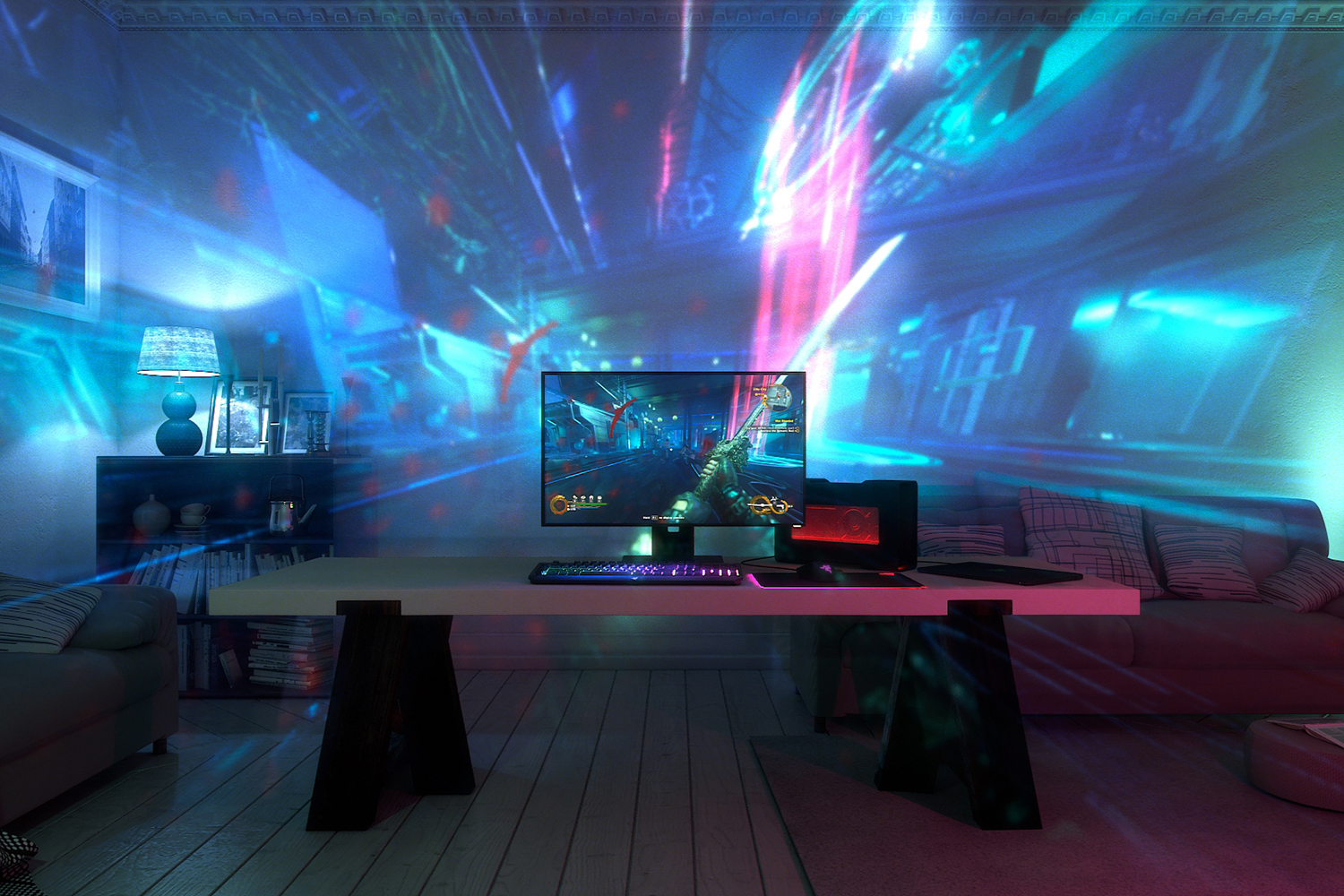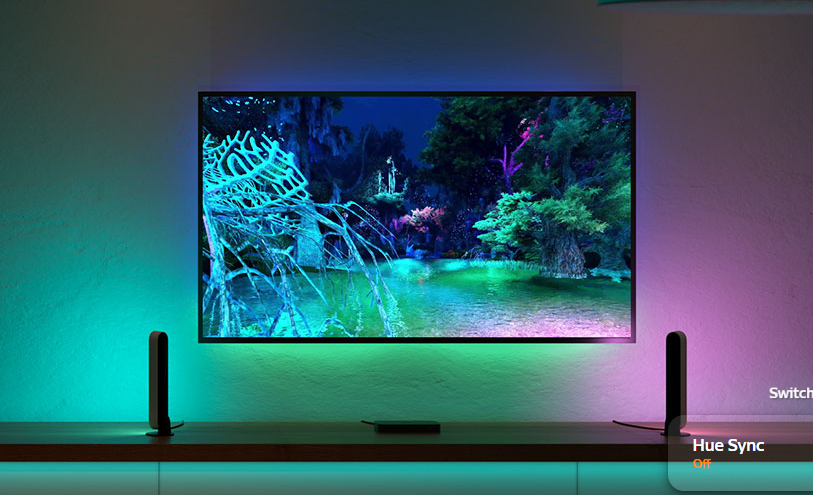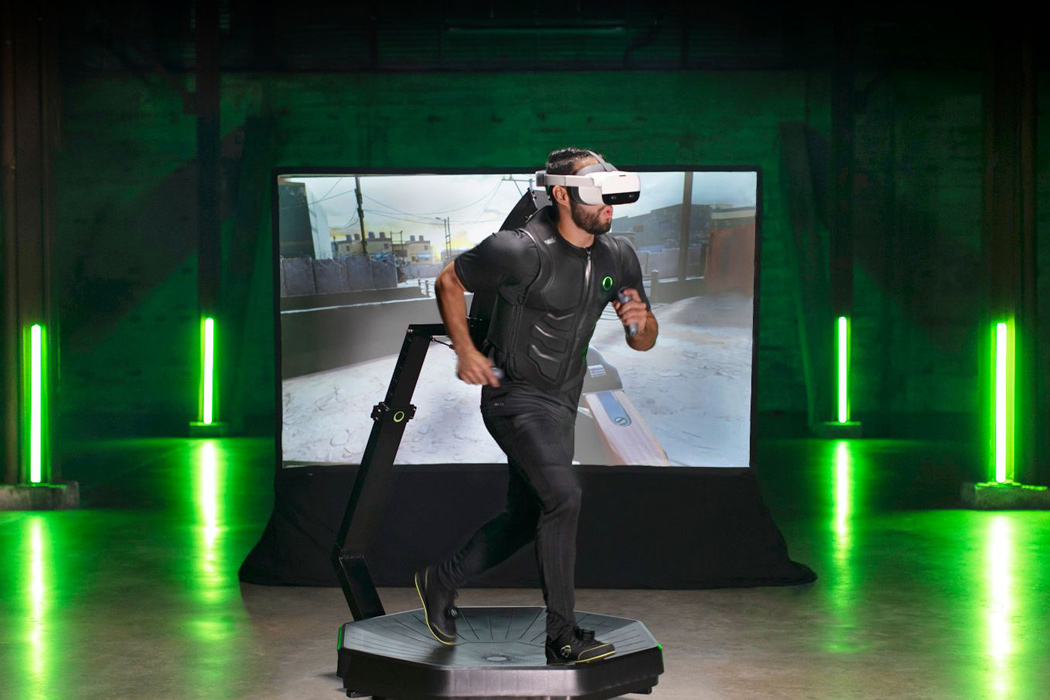Introduction to Haptic Feedback Technology
Immersion isn't just a gameplay element, it is the link between the game, and YOU ... the player.
How a developer or console manufacturer, or even your own pc, grips you into the game. Bringing you into the story, but also making it feel like you are actually there.
I want the most immersive gaming experience possible, and these items on this post today I think will help with that.
Recent Innovations in Haptic Feedback Technology
Gaming companies are taking haptics far more serious, as we've seen with Nintendo and Sony. Sadly, Xbox actually ignored one of their best features for a decade, which we'll get into later.
Ambient lighting is making a strong push into a wide audience.
Finally, there are new ideas and tech coming out, that will make your gaming experience even more realistic.
Haptics in Controllers
It all started with the simple dual rumble motors in console controllers. While Nintendo is often credited to have the first rumble motor, technically Sony beat them out by two days.
Regardless both dramatically impacted the controller landscape. Nintendo popularized it, and Sony invented the dualshock idea. Basically having one in each hand. Now around the time of the Xbox One, there were some really cools mods for the 360 controller, one of which was rumble triggers.

The reason why I bring this up, is that it was really amazing. I actually had bought this mod, and soldered it on myself. However I was too stubborn to combine it with another mod, and I ended up not using either. Dumb young me, however it was amazing. I didn't have a One console at this time. So it allowed me to play games more immersively on an older console. I remember trying out Bulletstorm, and being in awe.
Now why was I so keen on having rumble triggers? Where did that idea come from??
Well much to my dismay, most people don't realize that the Xbox One had what they called "Impulse Triggers", so almost a decade before Playstation 5 added rumble to their triggers. Xbox had them already! Yet, no one seems to know about them, and no developers seem to program them into their games. Despite it not being that difficult. I can only think of Halo, Forza, and Call of duty I think of games that have the feature. You can't turn them on, on the PC either.
These rumble triggers are some of the coolest things I've experienced, and you might think why? Well it adds 2 motors, to the already dual-2 motor system. Giving you a combination of 4, that can be used in unique ways. Not to mention on the sensitive finger tips.
Now that PS5 is quite popular as well, the haptics in that controller are very interesting as well. It seems that they took the HD rumble from the Switch Joy Cons, and the Impulse triggers from Xbox. Along with their already made dual shock system, then created something unique from the combination. Not to mention more games are already seemingly supporting the feature.
There is a lot of potential with basic haptics like this, and I wish they were used more often on platforms like windows or Xbox.
Other types of Immersion
What is in your hands is important, and I really wish we could get something like an Xbox controller but split like how the joy cons are.
However there are some really amazing visual elements that can bring you really into the game. While we may not ever get the Razer Ariana project, see below, we can try to emulate that in some ways.

Ambient Lighting
It all started with Philips...

They created this immersion system, that had fans to blow on your face, lights on the speakers that would sometimes sync with your games, a vibrational keyboard arm rest, and of course the speaker sound system.
I think one reason why this failed, was that there was too much going on. It was too niche for hardcore gamers at the time. Had they just focused on the lights, it might have been better off. Not to mention price, and not all games supported the lights (it had to be hard programed).
Next came the AmbiScreen, which I believe was a kickstarter project, and that is how I found it. However even now, but especially back then it was just too expensive. $200+
Philips wanting to take back the spotlight copied this idea, and to be honest did a better job (although is technically more expensive, having to buy the philips sync box and the hdmi box, and lights).

They have a number of products too that you can sync with it, you can see in the picture the light bars for example.
NOTE: Nothing I'm sharing in this post are affiliate links, as I'm just sharing the links to the sources of the images. I wanted to make sure I clarified that.
Then came Govee and Lytmi, which are alternative systems to the Philips Hue line of products. I actually picked up the HDMI sync box from Govee over on black friday, which was half off. Govee started out as a camera screening version, meaning instead of using HDMI signal to capture the colors, it used a camera on the top of the tv. However that can lead to latency, and looks sometimes janky in some setups (nitpicking).
I find that in movies and gaming, it really does add to the immersion. It has been something I've wanted for a decade or more, and I finally have it. It does do it well. I wish sometimes that the Govee light strip was more saturated, but maybe it is a firmware thing in the box. Perhaps just something I should account for towards comparing to other brands.
Imagine you're in the middle of Mass Effect, and you bring up the menu (in the first game it was a deep blue), and the whole wall behind the tv fills up with blue. You are crossing a desert, and the sun is bright in the corner, the sand all across your screen. The wall reflecting those things as you traverse the desert.
Sound Immersion
The first thing that comes to mind here is the brand Woojer, which created a wearable sound system. Making you feel each bullet coming your way, or the explosion in the back behind you.
While I haven't tried it myself, the reviews I've seen, seem to have quite positive experiences with it.
Not to mention just traditional sound systems, and ones that use Dolby Atmos for example. Having a quality soundbar can make a big difference. I started replaying the Mass Effect trilogy, which is really cinematic. Especially in the OST score, and when that bass kicks in, or the woosh of the space ship. It does seem to add a bit of capturing attention. Combining that with the HDMI light strips, it gripped my attention greatly.
The Future of Haptic Feedback Technology
I can't forget about the advent of VR in the gaming space. Putting you right into that world.

Using pads and other tools to allow you to really run in the game.
Predicted Trends
I'm really hoping we see a bit more copycatting from each other companies. Sony took the impulse triggers, and ran with it. Making it a far more viable tool.
Philips took Ambiscreen's idea, and made it vastly more well known.
I just wish people would a controller that is meant for the most optimal immersion. I even saw at one point a tech that was a layer on the shell of the controller that used slight electric pulses to simulate feeling.
Conclusion
In the end if the tech doesn't popularize, then you'll likely not see it again. At least not for another decade. I'm hoping that something comes out of this wave of innovation. Maybe an Asus Eee stick successor, or Xbox gets their act together.

